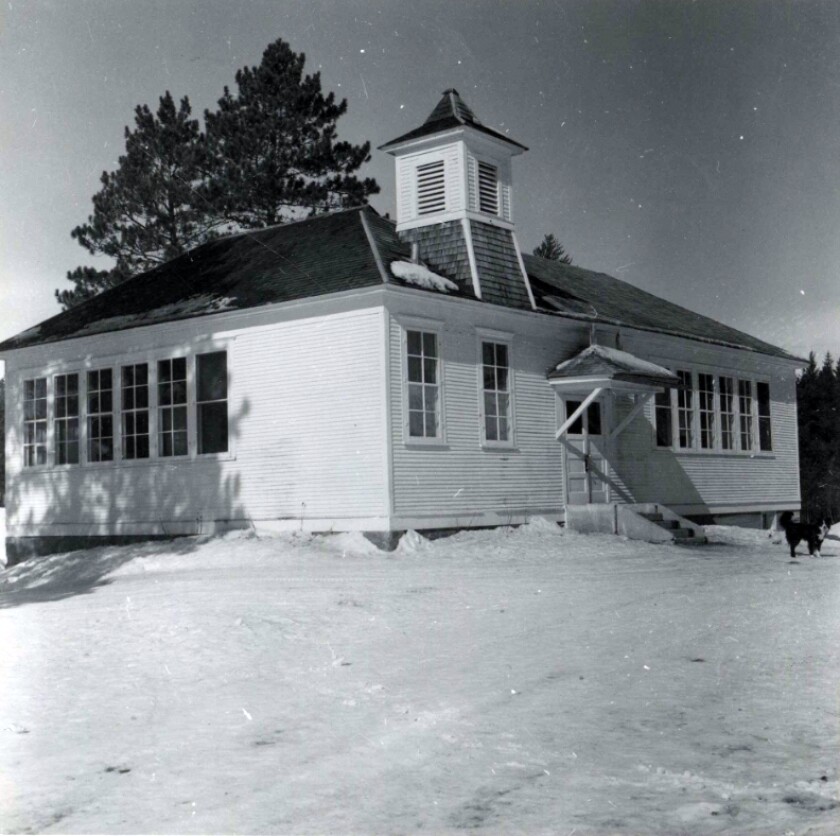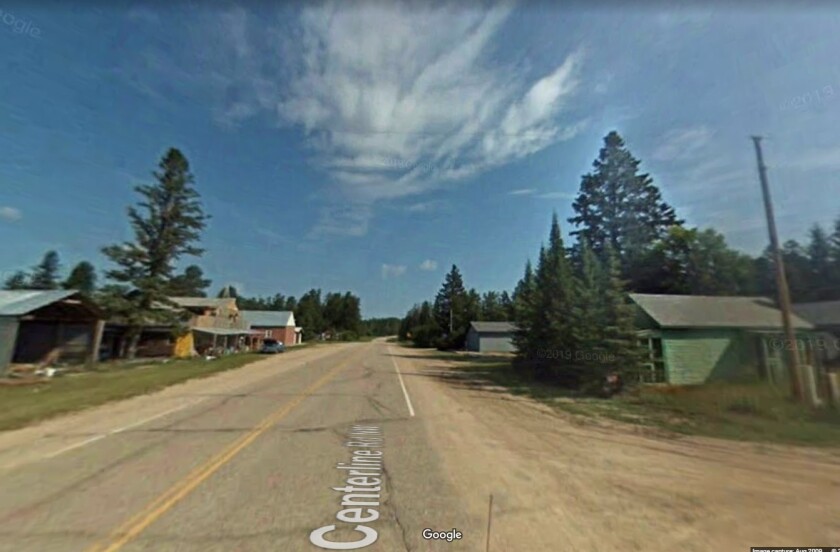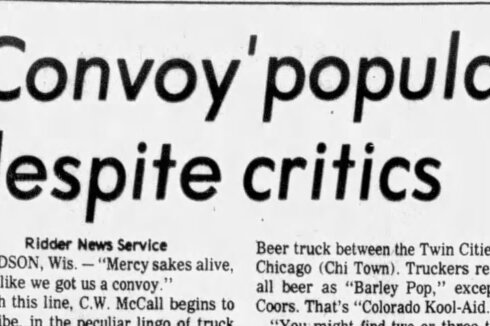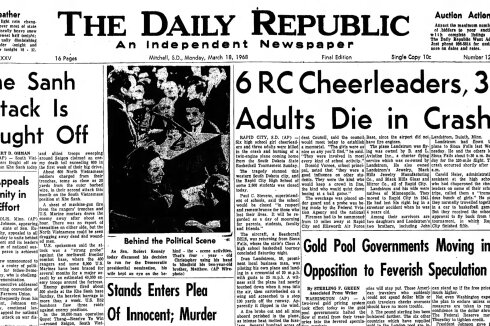Editor's note: This archival Vault article was first published Dec. 1, 2022.
PINEWOOD, Minn. — Eighteen miles northwest of Bemidji, in the backwoods of Buzzle Township, is Pinewood — once an operative logging camp filled with lumberjacks and early settlers. Throughout its history, this once lively community has become a place of unsolved mysteries, two bank robberies, a bizarre train derailment and multiple wildfires.
ADVERTISEMENT
The town was officially settled in the early 1900s, its vast forests became home to the lumber industry and the Soo Line Railroad brought settlers and lumberjacks from all over the country. As the logging camps grew, Pinewood’s population grew with it. East Pinewood School was built, along with a church, a saloon, a post office and even a movie theater. But with time all of these buildings have been abandoned, left to rot, destroyed by fire or torn down for new construction.
A tale of two robberies
Today a large stone structure sits in the brush beside Pinewood’s old main street. Cracked and left to crumble, this stone was once a safe inside the People’s State Bank, and its story involves a gang of robbers, a missing bag of money and a gunfight.
The People’s State Bank served the residents of Pinewood until its closing in the 1930s. The first robbery that took place in late November 1921 was not successful. The front door was broken into, and the infamous safe’s lock was broken, but no money had been taken. But recountings of the second robbery would be told for years to come.
On Sept. 29, 1922, an explosion rattled the sleeping residents of Pinewood. The safe inside the People’s State Bank had been blown to pieces and the front door of the bank was blown off its hinges. The front page of that afternoon’s Bemidji Pioneer gave an account of the robbery:
“Armed with shotguns loaded with large size shot, a band of at least five bank robbers invaded Pinewood early this morning, blew the safe of the People’s State bank and escaped with about $1,100 in cash and a quantity of bonds. Efforts on the part of the people of the town to halt the robbery failed, the robbers continued their work even after being fired upon, and making their getaway in an automobile, or possibly two, which they had left about a quarter of a mile east of town. After cutting all telephone and telegraph wires leading out of the town, the bandits began their work at the bank between 2:30 and 3 o’clock, wrecking the safe with three separate charges, one of the blasts blowing out one side of the bank building.”
Al Thompson, a Soo Line agent, was involved in the gunfight with the bandits. A stray bullet shattered a nearby window and Al’s brother was wounded. Thankfully no one else was injured that night.
Years later, in an interview conducted by the Works Progress Administration, Carl Clauson, a cashier who was in charge of the bank at the time, explained the theft in greater detail in the Works Progress Administration Project Journals in 1937.
ADVERTISEMENT
“The exact amount of the loss was never determined, as there were several bonds and other valuable securities taken as well as about $30,000 in notes, beside the cash on hand," he recounted. "Everything inside of the safe was removed, but only a small part of dynamite had blown the contents of the safe into bits of paper, and it looked like a rat’s nest.”
The next morning a bag of pennies was found between Pinewood and Solway and some burned checks near Lake Itasca, the only money recovered from that night. The burglars were never found, no one ever came forward and no one was ever charged for the crime.
“It wasn’t the James brothers that robbed the bank!” Lois Jenkins says. Jenkins, a researcher for the Beltrami County Historical Society, grew up near Pinewood.

What's left of Pinewood
When the Soo Line Railroad was discontinued in 1963, the tracks that once ran through Pinewood were ripped from the ground or buried in the earth.
"The trestle west of Pinewood sits on Nelson Dam road. It’s earthen now, they covered the tracks with a timber frame in the early 1950s,” Jenkins explained. “But there is a rumor that there was an accident on that trestle many years ago. Leon Olson claims that he was there to see it happen.”
Leon Olson, who grew up near the Pinewood area, claims that a train derailed and fell from the trestle west of the town into the Clearwater River. According to Olson, it was a long way down, but thankfully no one was hurt in the incident. Olson provided a picture to prove that the accident happened, but the image is hard to make out. A record of the accident has yet to be found.
ADVERTISEMENT
Wildfires also ravaged the area, often from causes unknown, taking thousands of acres in their wake. The most recent fire was in 1973 and it destroyed over 2,700 acres. Some think it was started by a dumpster fire gone bad, but no one is certain. Jenkins tells of another rumor that the fire was started by a group of Bemidji State University students.

“They called themselves ‘Rangers.’ A group of students purchased a church on Buzzle road and used it for parties in the early 1970s,” Jenkins says. “And because of vandalism or misadventures, the church caught fire and burned. This fire could have possibly started the Pinewood fire of 1973. This is all hearsay of course, but that would have made an interesting story.”
Today what remains of the town are only a few abandoned buildings, the rundown saloon, what’s left of the bank, the Buzzle Town Hall, and the Pinewood American Legion.
According to Jenkins, the town hall used to be a dance hall where all sorts of events were held. Lumberjacks abandoned the area when the lumber was gone and the logging operations and sawmills were shut down. And as other towns in the area grew in size, many moved from Pinewood to where there were more employment opportunities.
There are likely more unsolved mysteries in Pinewood, shrouded in mystery, distorted by years of rumors or buried in the soil.
Editor’s Note: The Beltrami County Historical Society is partnering with the Bemidji Pioneer on a series of monthly articles highlighting the history of the area. For more information about the Historical Society, visit www.beltramihistory.org.








